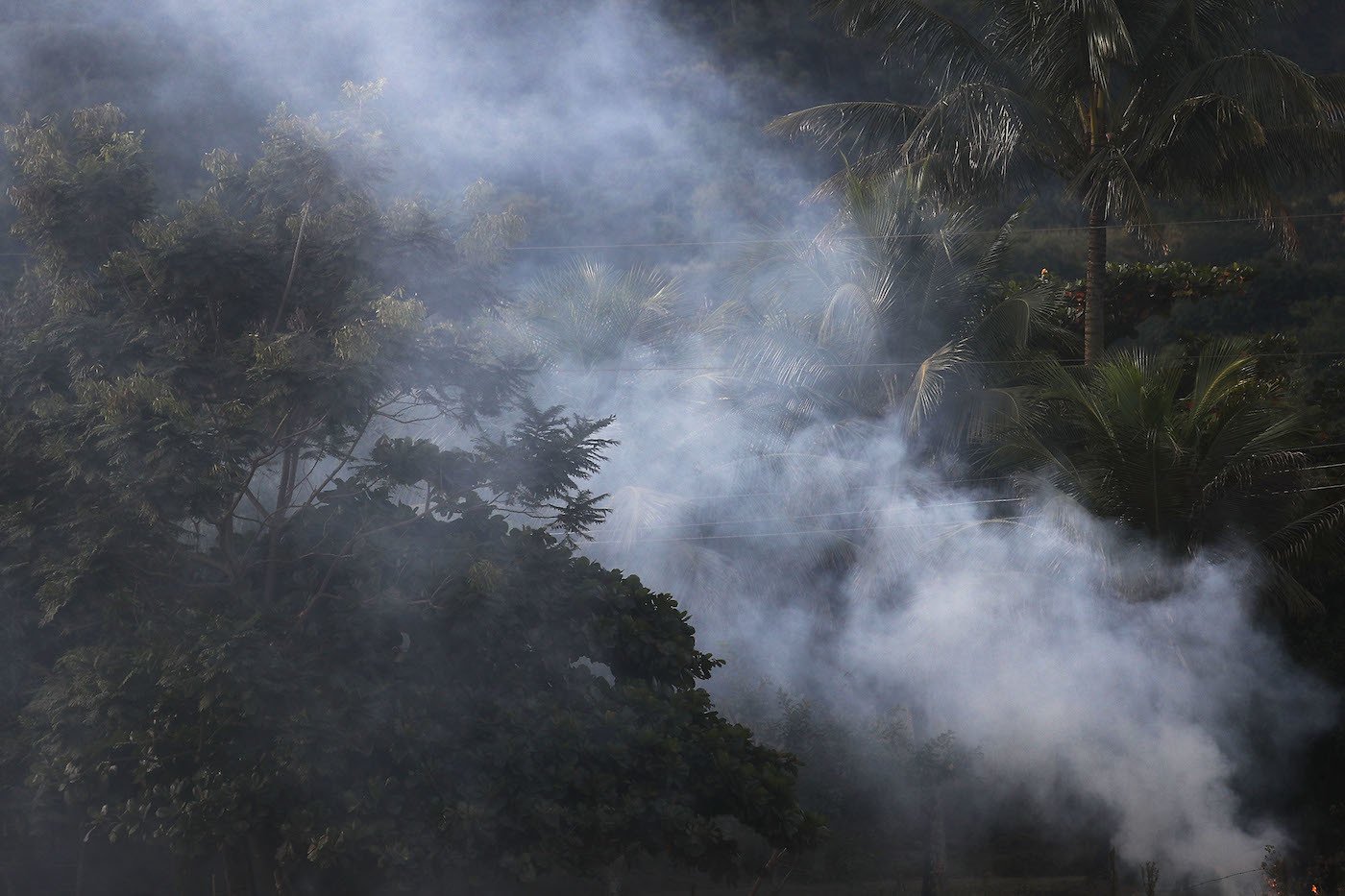
August 23, 2019 at 12:07AM by CWC
After a day spent off Instagram yesterday, I dived into my feed for a few minutes before bed to check in on the latest in #hotgirlsummer content. But instead of a series of smoldering selfies, I found shocking images of the Amazon rainforest burning, photos re-posted by a broad swath of friends—including one whom I had recently watched gobble down a steak at dinner.
I point to my friend’s menu choice as an example of the disconnect I felt while scrolling last night. Because deforestation—defined as the human-driven and natural loss of trees—is happening at unprecedented and unsustainable rates, and the animal agriculture that produced his filet is a significant contributor to this destruction. So while the fires are scary to see (and yes, are tragic, I don’t mean to minimize their devastation), they’re a symptom, rather than the main cause, of a larger problem.
Statistics around deforestation are a bit shocking, actually. Los Angeles-sized swaths of land are being depleted in the Amazon annually. And despite settled climate science that tells us the planet is in crisis—and the knowledge that the Amazon rainforest’s survival is critical to the planet’s—this deforestation is actually accelerating. As reported by NPR, Brazil’s National Institute for Space Research (INPE) says the amount of Amazonian land that was deforested in July 2019 represented a nearly 300 percent surge over deforestation in June 2018.
The amount of Amazonian land that was deforested in July 2019 represented a nearly 300 percent surge over deforestation in June 2018.
ADVERTISEMENT
ADVERTISEMENTKate Spade Autumn/Winter Sale |
Rampant tree loss has then led to an 80 percent uptick in fires this year over last, according to INPE, creating a vicious cycle of rainforest destruction. This is in part because when trees go, climates dry out, which makes areas more susceptible to fires; however, this year was relatively moist, which has led environmental experts to conclude that current fires—there have been 9,000 spotted just this past week—were likely man-made by industrialists, e.g. farmers and livestock owners, who simply want to clear land efficiently.
If deforestation continues at this rate, there will be dire consequences for the environment and, in turn, us. The Amazon is one of the world’s largest “carbon sinks,” or natural areas that remove carbon dioxide from the atmosphere. As most of us are aware by now, the more carbon dioxide, the faster the planet warms. And, according to the World Resources Institute, if tropical deforestation were a country, it’d rank third in terms of its contribution to carbon-dioxide emissions (behind China and the U.S.). Plus, if just 10-20 percent more forest is lost, some experts say the entire forest will dry out, transformed into savannah. If that happens, we will have lost what is known as the “Earth’s lungs”—and it could happen a lot faster than you think. Seventeen percent of the Amazonian rainforest has been felled in the last 50 years, so it follows that, given the 10-20 percent stat cited above, it could be wholly destroyed in the next 50.
Where’s the beef in all of this? While deforestation has many causes—logging, palm oil production, mining and drilling, urban sprawl, to name a few—NPR reports that around two-thirds of deforested land worldwide is cleared for farming and ranching. To further exemplify that this is a growing problem, NPR also points out that the amount of cattle in Brazil has tripled in the last three decades.
Two-thirds of deforested land worldwide is cleared for farming and ranching.
Transforming deforested land into cattle-grazing pasture is particularly bad for the environment because, not only are we ripping out the Earth’s lungs, we’re replacing them with ruminants (e.g. cows) that produce methane gas when they burp, fart, and poop. This is like ripping out one of your lungs and then taking up smoking, because methane is an undeniable contributor to global warming—when released into the atmosphere, it absorbs heat from the sun, which causes a warming effect. Plus, methane is 84 percent more potent than carbon dioxide in the first two years after it’s released. According to the New York Times, worldwide methane emissions have doubled in just the last 10 years, too. And though they’re not the only cause of methane emissions—the oil and gas industries are worse offenders—flatulent cows and other animal-agriculture-related factors account for 44 percent of global methane, according to some estimates.
So here we are, back to my friend and his steak. While it’s true that, as the New York Times recently pointed out, policies—rather than individual actions—are most critical when it comes to saving the planet, our personal choices drive the industries favored by politicians such as Brazil’s eco-unfriendly president Jair Bolsonaro, who has significantly rolled back Amazonian protections in order to exploit the rainforest for financial gain. By choosing not to support these industries, we make them less profitable, which in turn makes them less appealing to those whose agenda boils down to the bottom line.
In recent months, my growing passion for the environment has led me to the conclusion that climate change truly is, as Al Gore puts it, “an inconvenient truth.” Not only do we need to give up actual convenience (e.g. all things plastic), but we may also have to give up things we really love or attach cultural significance to, like red meat. I understand, as a Texas-raised gal, that sometimes, you just want a freaking cheeseburger. And occasionally, even I eat one. This has increasingly become a rarity, however, and now, with images of a world on fire seared into my brain, I am committed to eliminating my contribution to beef demand—full stop.
This action isn’t doable for everybody, but I would encourage you—if you were as moved by the fire photos as I was—to cut back on your beef consumption to whatever extent possible. Every little bit helps. According to a study published this month in the journal Scientific Reports, if every American were to reduce their land animal consumption by 25 percent, global greenhouse emissions would reduce by a full percentage point. (That may not sound like much, but the New York Times calls it a “significant reduction.”) Given that by 2050, the Intergovernmental Panel on Climate Change says we need to ensure emissions are 40 to 70 percent below what they were in 2010, you can see why it might make sense to take your beef and other animal consumption even lower. And while this may be more of a sacrifice for some than others, I think we can all agree we don’t need beef more than we need the air we breathe.
Climate change isn’t just bad for our physical health—it’s doing a number on our mental health, too. If you’re overwhelmed RE: how to help, start with this one high-impact, plastic-centric change.
Author Erin Bunch | Well and Good
Selected by CWC
ADVERTISEMENT
ADVERTISEMENTUp to 30% off Gift Sets |







